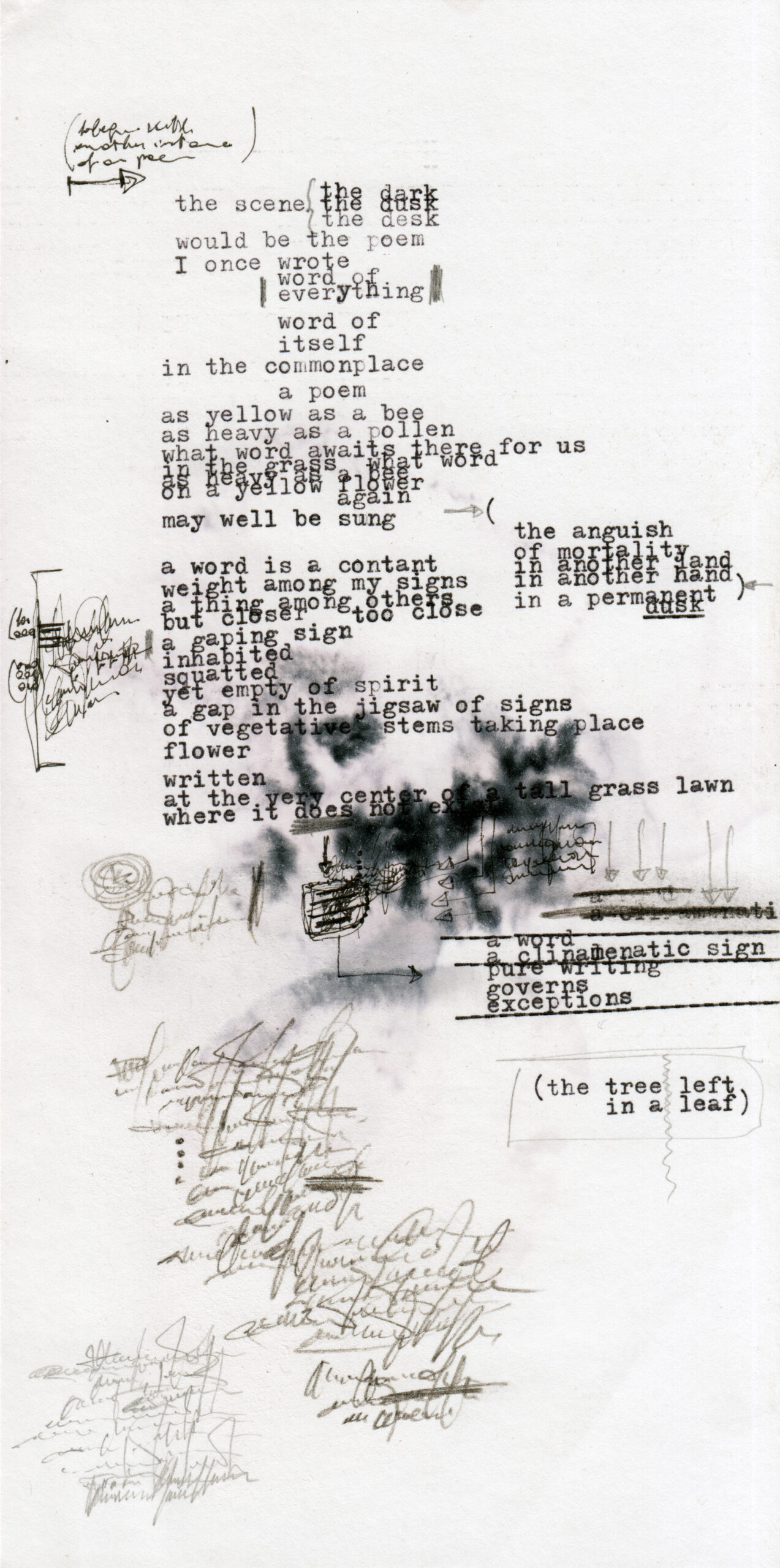About the works
Objects under investigation is a collection of separately conceived works that address the problem of textual-related medium and, in a sense, mediality in art from an experimental perspective. The word object[s] is meant as a neuter reference to both the text as a phenomenon and the text as a product in itself. It suggests the idea of something to be physically handled, while not necessarily a physical object.
As stated by Rosalind Krauss, any medium may bring about art, and the special condition conventionally addressed as post-mediality is to employ media traditionally not intended to make art. Discussing the medium when dealing with broadly intended textual objects is rather challenging. The issue cannot, in fact, be restricted to the invention of a set of unreadable signs §apparently disjointed from reality, as in the case of asemic writing, nor to the combination of such signs with alphabets or languages from the most disparate fields, as with other hybrid forms. The process of writing becomes open, yet more intrinsic, and the concept of medium gets reframed. Moreover, since writing is hardly separable from reading, a further and possibly even more complicated field of investigation comes into play: what does it mean to “read” something asemic? Does it make sense to attempt to sequence an asemic pattern? Reflecting upon this as a feasible connection to sound-poetry, a twofold proposal is presented: the first two audios feature a texture of noise and words stemming from partially asemic pieces, while the third one explores the phenomenon of a glacier melting, recorded through a set of contact microphones and later remixed, resulting in the hybrid forms of “EIS”.
From a linguistic point of view, a medium partakes as an idiom of a particular art practice. It is the trait that cannot thoroughly be translated or transferred to another practice. Its Latin etymology reads “what lies in between”. The two competing polarities of this relationship must hence be investigated. A medium sets itself as a middle term between ‘reality’ (whatever one may define by this) and ‘reification’ or, narrowing the scope, between what an art piece is aimed at (‘objectivity’) and what it ultimately consists of (‘objectification’).
It is a ‘tension’ in both that objectivity and objectification tend to overlap (while hardly or partially actually doing so) and in the sense of the tensor, which defines the metric within the space (mathematical, artistic and so forth) under investigation, i.e., the tools that set out the proper relationships between the ‘objects’ considered.
It is a method (a system of rules or procedures) to work out the cross-breeding of different practices, like the folding of surfaces in abstract geometry. This resembles the idea of curvature, which Einstein identified as the inherent property of spacetime which is ‘responsible’ for gravity: “matter tells spacetime how to curve and curved spacetime tells matter how to move.” Signification no longer appears as something emanating from particular nodes (words) or well organized clusters of them (lines, sentences) and propagating through the text, but as a feature of the text[ure] itself. If a body’s weight on Earth can be ascribed to the fact that it is traveling through a warped spacetime, why not apply the same description to the feeling of detecting signification throughout an asemic field and envision it as a sort of warped textual surface, whose words are possibly elsewhere but not far enough to be neglected?
The relational structure is the true essence of the textual medium and includes the metric set by the printed, painted, typewritten, handwritten, generative and so forth signs combined with a variety of materials (papers, cardboards, plastic sheets, glues, et cetera) that potentially enrich and further complicate the linguistic stack. Both the ‘writer’ and the ‘reader’ operate at an experimental level: the writer sets up the experiment, collects some preliminary data that the reader interprets.
But the ‘writer’ is, in turn, a ‘reader,’ possibly the first, and his role is rather delicate since, in the asemic field, he must avoid disturbing the signs with too much consciousness. His consciousness is to be analytical right before and at the end of the process, not so much in the making of it sign-by-sign, not as a word-by-word writing.
Asemic works evoke interference patterns, extended fields of sense whose elements of signification are not word-situated. They are seats of signs that reinvent or conceal their meaningfulness to deliver it into new contexts.
The combination of words and asemic signs presents a further degree of complexity since the linearity, first of writing then of reading, is faced with the nonlinearity of vision. The interaction between strings of words or full sentences and asemic components doubles the experience of a metric. The residual readability of the text with its metrical content and the metric space of the visual arrangement of both words and asemic signs add up and lead to a sort of hermeneutic pressure that the act of ‘reading’ only partially releases.
Flowchart of A Pensive Linotype

Lunar Phases

EIS - The voice of the Icelandic Glacier





